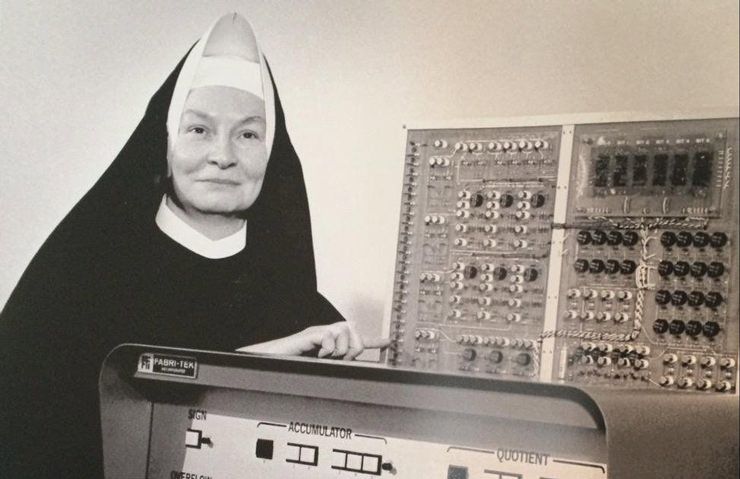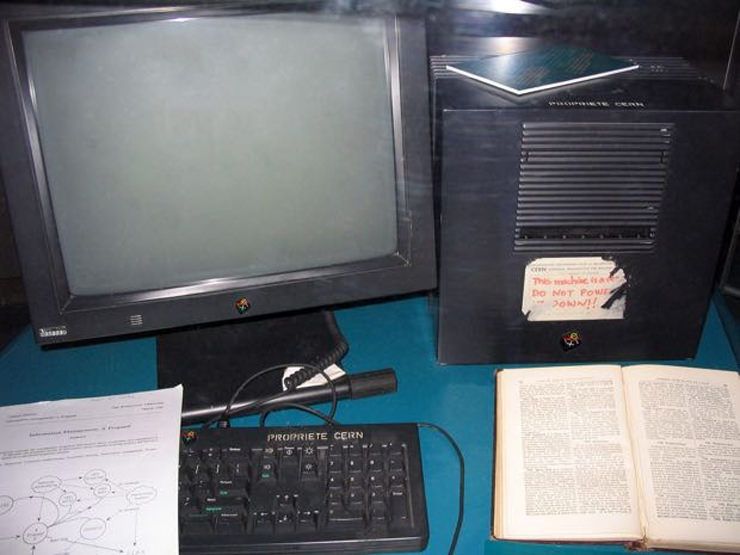Sometimes technologies appear, develop and disappear for very strange reasons. The most interesting incidents “on the topic” are collected in our selection.
Wi-Fi technology was born thanks to a Hollywood star
Hedy Lamarr is a famous Hollywood film star of the classical era. And yet – a gifted mathematician and an expert on defense systems (she figured them out thanks to her first husband, a weapons manufacturer). Hedy was friends with the same multi-talented person like herself – avant-garde composer and author of a book on endocrinology George Antheil.
During World War II, friends patented a seemingly purely military technology – it allowed torpedoes going to the enemy to “jump” from one radio frequency to another in order to avoid enemy interference and deviation from the target. Initially, the US military was not interested in the development, but 20 years later, during the Cuban Missile Crisis, they changed their minds. And rightly so – after all, today a patent from the 40s of the last century appears in the documentation of a variety of data radio standards, including Wi-Fi and GPS.
BY TOPIC: “Spanish shame”: what does this expression mean and how did this expression appear?
The killer got away with Firefox

In 2011, newspapers around the world wrote about Casey Anthony’s “trial of the century” – she was alleged to have killed her two-year-old daughter (for more on this story, see here). After the defendant was acquitted, her lawyer admitted that Casey’s computer really had search queries on the topic of poisoning and strangulation. They just were not found during the investigation – the investigators studied the history in Internet Explorer, and the girl used Firefox.
BY TOPIC: How to bequeath a Google account (Gmail, YouTube, etc.) in case of death.
A bug in the program cost the lives of dozens of American soldiers during the Gulf War

In 1991, the US Army was at war with Iraq. One of her biggest failures was an incident near the town of Dharan (Saudi Arabia), where an Iraqi Scud missile hit an American barracks, killing 28 soldiers at once. This should not have happened: after all, there was a new Patriot anti-aircraft missile system nearby, which, in theory, should have prevented the threat without any problems.
During the subsequent “debriefing”, it turned out that the Patriot software worked with errors: one part of the software calculated the current time in decimal notation, and the other in binary. As a result, the longer the entire system worked without rebooting, the worse the situation with combat readiness became – and during the war, of course, no one was going to reboot the military complex.
BY TOPIC: 7 Famous Symbols You Might Not Know About.
The first Ph.D. in computer science was a nun

Mary Kenneth Keller rightfully occupies a worthy place in the history of computer knowledge: while still a student, she participated in the development of the BASIC programming language. The University of Wisconsin Department of Computer Science awarded her a Ph.D. in Computer Science in June 1965—a first ever degree! Well, or one of the first – in the same month, Irvin Tan defended his thesis at the University of Washington.
The piquancy of this story is added by the fact that Keller was a sister of mercy in the monastic order of the Blessed Virgin Mary. This organization pays special attention to education, so the girl’s success is not at all accidental.
BY TOPIC: How to find out about a user’s intimate life from a user’s account on a social network.
For 20 years, the password to access US nuclear missiles was 00000000

In 1962, US President John F. Kennedy was afraid that one of his military would go crazy and launch nuclear missiles at the USSR, and ordered an additional security measure in the form of an 8-digit password. The officers responsible for the launch were more afraid not of their colleagues going crazy, but of the inability to give a quick response to the launch from the Soviets, and they carried out the order formally – they set the password “00000000”, and then, like employees of some provincial office, wrote it down on a piece of paper. Today, the US Air Force disputes the authenticity of this story, but it was told to the world by one of its former employees, the custodian of the nuclear button in the 1970s, Bruce Blair. So, as they say, do not la-la …
BY TOPIC: Nikola Tesla – who is this Serb, after whom the Tesla and Nikola companies are named.
The Norwegian first connected the whole country to the Internet, and then turned it off himself

Pal Spilling is a computer technology pioneer in Norway. His interest in computer networks led to the fact that the country gained access to the prototype of the modern Internet ARPANET already in 1973 – the first in the world after the United States. 15 years later, the World Wide Web experienced the first massive virus attack in its history – a worm called Morris infected computers and created many copies of itself, causing machines to quickly fail.
Colleagues from the United States, where the “epidemic” was already raging, called Spilling and warned him of the danger. The scientist did not think long – he just took and “chopped off” the whole of Norway from the Network. Then it was enough to remove only one cable from the socket.
BY TOPIC: Space speeds: how fast do you need to fly to leave the Earth, the planetary system and the galaxy?
“Amazon” was named so because of the desire to be the first in the directory

Amazon’s online hypermarket for goods is a rare example in the history of the IT industry. After all, it was born when most of us had not even heard of the Internet, but, unlike countless competitors, it still works successfully.
Perhaps its name is partly to blame for this. Amazon founder Jeff Bezos originally wanted to call it Cadabra (from “abracadabra”) – so he wanted to emphasize the magic of the never-before-seen procedure for buying books through an online store. But when his lawyers repeatedly confused “cadabra” with “cadaver” (“corpse”) during the process of setting up a business, Bezos realized that his name was no good.
Meanwhile, it was 1995, and the Americans were navigating the web using the Yahoo directory. The latter was built alphabetically, and the letter “A” in it predictably came first. So all Jeff had to do was come up with a word that started with that letter. Which he eventually did. By the same principle, by the way, the Apple brand was created.
BY TOPIC: The hidden meaning of famous company logos.
The computer mouse has been invented at least three times

In 1968, Douglas Engelbart showed the world the revolutionary “oN-Line System” – a computer with a graphical interface, which became the prototype of modern UI. Engelbart’s presentation also included a mouse he had created. But devices similar to it were invented at least twice before the inventor.
The discoverers were Tom Cranston and Fred Longstaff – they worked for the Canadian company Ferranti-Packard, and made their discovery in 1952, and (independently of them) an employee of the British Navy Ralph Benjamin in the early 1960s. Both projects involved the use of a more modern rubberized trackball – and Engelbart proposed a bulky design with wheels. But, as is often the case with military projects, the authorities did not understand the prospects for new developments. As a result, they were archived, and the laurels of the inventor went to a completely different person.
BY TOPIC: Ideas that helped their authors become IT billionaires.
Your data may be damaged by cosmic radiation

Semiconductor electronics has been suffering from the so-called. “soft errors” – this is when a particular bit or signal is incorrect, but there are no problems in the system. Researchers spent a lot of time figuring out this puzzle, and eventually came to the conclusion that at least some of these errors can be attributed to cosmic rays – high-energy particles that hit the Earth from space and randomly change bits in your computer chips. The easiest solution to this problem is to restart the PC, the more difficult option is to work in an underground cave.
BY TOPIC: Leonardo da Vinci’s man with outstretched arms: what is the meaning of the picture?
For most of its history, Nintento only produced playing cards.

Nintendo is the “oldest” of the modern console manufacturers. The company was founded back in 1889, when the tsars of the Romanov dynasty still ruled in Russia, and in Japan the modernization of the country began in a Western way.
For the first 67 years after its inception, Nintendo produced the same product, the Hanafuda playing cards. In 1956, the grandson of the founder of the company, Hiroshi Yamauchi, visited the United States and was unpleasantly surprised by the miserable existence of America’s largest playing card manufacturer. As a result, a decision was made to diversify activities. After several unsuccessful attempts, the company found its place in the consumer electronics market. And that’s great – because otherwise we would not have seen the Nintendo consoles (including the fresh development of Switch) and the incredible game Pokemon Go.
BY TOPIC: It seemed: 70 photos with optical illusions from real life.
Video chat appeared 50 years ago

In 1970, the well-known American cellular operator AT&T introduced a commercial version of its new product, a video telephone called the Picturephone. Hundreds of thousands of such devices were expected to appear in the United States within the next five years, but by 1975 only a few hundred were in operation.
The reasons for the failure were not least related to the high price of the service – for a half-hour video chat, telephone operators asked for $ 160 per month (in 2015 it would have been $ 947). In fairness, and half a century later, we do not always need such a service – after all, most often voice communication is enough.
BY TOPIC: How many years do trees live (table).
Nigeria, Ghana and Bangladesh ‘skip’ the landline era

All the leading nations of the world spent the 20th century connecting their citizens to telephone networks. But the poor regions (from which those very “leading nations” often pumped out all the resources) even today sometimes do not know what a fixed line is. For example, in Nigeria, Ghana and Bangladesh, less than 1% of households are connected to the Landline. But this does not mean that people live there as they did 100 years ago – quite the contrary, in each of these countries more than 85% of the population has a mobile phone.
Taking into account the fact that today, even in Russia, where at one time they fought to the last for the “pipe” (it’s enough to watch Soviet films from the late USSR), people are increasingly refusing a landline phone, it’s probably not worth it for Africans to regret much about what they missed.
BY TOPIC: Hell for a perfectionist: 50 photos that destroy harmony.
The very first web page in the world is still available at its original address

On August 6, 1991, Tim Berners-Lee posted on the Usenet group information about his current working project, the World Wide Web – or, as he himself called it, “W3” (strangely, this abbreviation in the end did not take root, although it had every chance). You can see that record – the first in the history of the Internet – in its original form even now, it stored CERN High Energy Physics Laboratory website. Its content looks the same as it did 26 years ago – no background, no graphics, just text with links to other information about the then-nascent Web.
The FAQ page is especially touching – it contains information on how to create your own web server and send a web document to your mail so that you can access it even without an Internet connection.
See also:
.
The post 13 Unusual Facts From the History of the IT Industry appeared first on Gamingsym.
